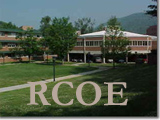Reich College of Education, Appalachian State University
Artifact # 5
CONTEXT: I contributed to creating a World War II literature circle unit by planning fourth grade lessons, based on several books such as: The Faithful Elephants, Baseball Saved Us, Sadako and the Thousand Paper Cranes, and Twenty and Ten. The literature circle unit was created in a Language and Literacy in the Elementary School course at Appalachian State University, under the instruction of Beth Frye.
IMPACT: Since the World War II literature circle unit is posted on the web, it can serves as a resource for teachers and students worldwide. The unit incorporates books for students on fourth, fifth, and sixth grade reading levels, and it allows students to become self-directed learners, as they read texts, choose characters to evaluate, create questions and answers for group discussions, highlight interesting passages, and mark words for vocabulary studies. Students then use collected information to facilitate group discussions on specified sections of the chosen books. Students take ownership of learning, as they are actively involved in reading texts, completing assigned role sheets, and guiding small group discussions. The World War II literature unit provides teachers with engaging and comprehensive reading lessons, which take into account varying reading abilities to meet the diverse needs of students.
ALIGNMENT: The World War II literature
unit meets goal IIA of the National Educational Technology Standards for
Teachers, as well as INTASC Standard I. By creating this literature
circle unit, I developed developmentally appropriate learning opportunities
to meet the diverse needs of learners. For example, the literature
circle unit accounts for differences in reading levels of students in a
single grade level by incorporating books on fourth, fifth, and sixth grade
levels. This allows struggling students, as well as advanced
students, to be included in the same unit/topic of study. The web-based
literature circle unit serves as a technology tool for teachers in order
to plan instructional strategies that will support the diverse needs of
learners (IIA). In addition, the literature circle unit meets INTASC
Standard I since it incorporates the use of different roles to help students
with interpreting ideas from a variety of perspectives. For example,
each student is assigned a different role, collects information in the
text to support that role, and then his/her shares ideas of that roles
in a small group discussion. In addition, the literature circle unit
is based on an inquiry method of learning, as students facilitate self-directed
discussions on texts by asking and answering each otherís questions (INTASC
I).
